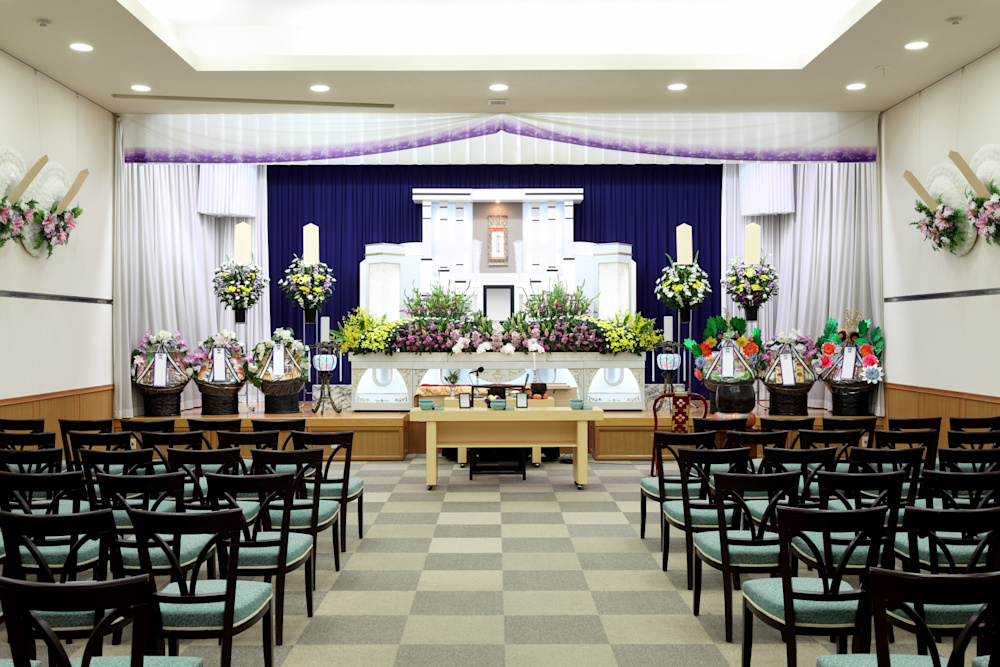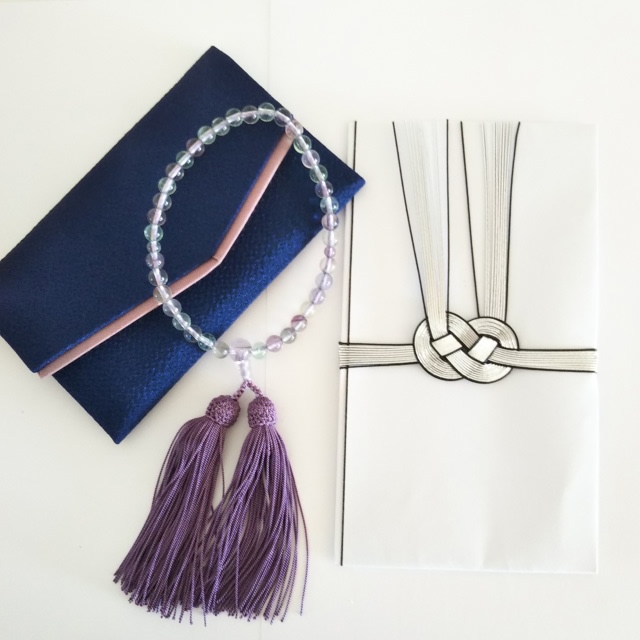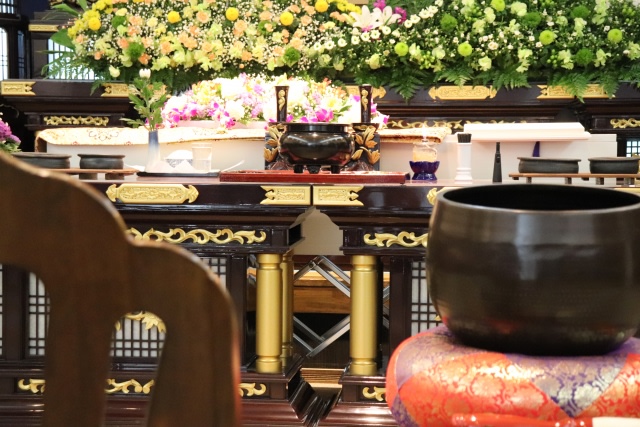Updated August 6, 2025
Funerals in Japan: Traditions and Procedures to Know for Foreigners
Death is an inevitable part of life, and understanding the cultural practices surrounding it is important for foreigners living in Japan.
In this article, we'll explore traditional Japanese funeral customs and explain the relevant processes and customs for when someone passes away in Japan, including costs and repatriation procedures. Let’s begin by explaining the Japanese funeral customs and general etiquette.
Japanese Funeral Customs
Japanese funerals (known as sōshiki or お葬式) are deeply rooted in Buddhist traditions and typically consist of several distinct ceremonies.
Traditional Japanese funerals have historically been conducted at home, but modern ceremonies typically take place at dedicated funeral halls or Buddhist temples.
Most Japanese funerals are Buddhist in nature, though Christian and Shinto ceremonies are also practiced depending on the religious affiliation of the deceased.
The Wake (Otsuya - お通夜)
The wake, or otsuya, is usually held the evening before the funeral.
This ceremony provides an opportunity for family, friends, and colleagues to pay their respects to the deceased and offer condolences to the family.
During the otsuya, the deceased is placed in a coffin with dry ice to preserve the body. The coffin is positioned with the head facing north or west, in accordance with Buddhist beliefs. The altar around the coffin is adorned with flowers, along with a portrait of the deceased and various offerings, including fruit, sweets, and rice.
The wake often continues late into the night, hence the name Otsuya, which literally means "passing the night." Family members would traditionally stay with the deceased through the night, though this practice is becoming less common in modern times.
Attendees at the wake offer their condolences to the family and typically make a monetary offering called kōden (香典). They also burn incense as a sign of purification and to honor the deceased.
The Funeral Service (Osoushiki - お葬式)
The funeral service is typically held the day after the wake, often in the same location. During this ceremony, a Buddhist priest chants sutras while family members and guests offer incense (お焼香 - oshoukou) to honor the deceased.
The priest's recitations are meant to aid the deceased's spirit in its journey to the afterlife.
An important figure at the funeral is the chief mourner (mōshu - 喪主), typically the spouse or oldest child of the deceased, who leads the family through the ceremonies and makes arrangements. The chief mourner often wears a black suit with an armband or a traditional black kimono with a family crest.
During the service, eulogies may be given, and sometimes friends or family members will place flowers, letters, or meaningful objects in the coffin as a final tribute. After the service, the coffin is sealed and transported to the crematorium.
Cremation and Bone-Picking Ceremony (Shuukotsu - 収骨)
Cremation is standard practice in Japan, with nearly all deceased being cremated. This practice aligns with Buddhist beliefs and addresses practical concerns related to limited burial space in Japan.
The cremation typically takes place immediately after the funeral service, and family members are expected to attend.
Following the cremation, which usually takes about 90 minutes, family members participate in a unique ritual called kotsuage (bone picking). After the cremated remains have cooled, they are placed on a table where family members gather around.
Using special chopsticks, family members collect the bones in pairs, starting with the chief mourner or someone close to the deceased. Even for the last bone, they ensure a partner assists. This is the only time in Japanese culture when it's appropriate for two people to hold the same item with chopsticks.
In eastern Japan, all remains fill a larger urn (full bone collection), while western Japan uses a smaller urn for partial collection.
This ritual might sound unusual to many Westerners, but it's an important ceremony that signifies the family's final act of care for their loved one. It also serves as a concrete acknowledgment of death and helps bring closure to the family.
If you're curious about other cultural practices in Japan that might surprise foreigners, check out our article on disrespectful things to do in Japan.

What to Wear to a Funeral: Japanese Funeral Attire
The Japanese place great importance on proper funeral attire, as it demonstrates your respect for both the deceased and their family.
Here's what's expected for different categories of attendees:
Japanese Funeral Attire for Men
Men should wear a plain black suit with a white shirt and a black tie. Black leather shoes and black socks are also expected. Accessories should be kept to a minimum—a simple watch is acceptable, but flashy jewelry should be avoided.
For formal funeral attire, men traditionally wear a black necktie with a white shirt and a black suit called mofuku (喪服). Some older Japanese men might wear a traditional black formal kimono called a montsuki with a black haori (jacket) and hakama (traditional Japanese trousers).
If you don't own a black suit, a dark navy or gray suit is acceptable, but black is strongly preferred. A black armband may be worn by close family members, particularly the chief mourner.
Japanese Funeral Attire Women
Women should wear a black dress or a black suit with a white blouse. The dress should be conservative in cut, with hemlines below the knee and sleeves that cover the shoulders. A black jacket or cardigan is appropriate if the dress is sleeveless.
Jewelry should be minimal and conservative—small pearl necklaces or earrings are acceptable, but nothing flashy or colorful. High heels are common but should be black and modest in height. Stockings should also be black or skin-toned.
For traditional attire, women may wear a black kimono called mofuku with the family crest (kamon) displayed in white. However, this is mainly worn by close family members. Regular attendees shouldn't wear traditional Japanese mourning clothes unless they are very familiar with the customs.
Attire for Students (Kids)
Students typically wear their school uniforms to funerals, as this is considered appropriately formal in Japan. Many Japanese school uniforms are designed to be suitable for formal occasions.
If students don't have a uniform, boys should wear dark-colored suits or blazers with slacks, and girls should wear dark dresses or skirts with blouses. The colors should be subdued: black, dark blue, or dark gray.
Even very young children should be dressed conservatively in dark colors. Babies and toddlers might wear dark blue or black outfits instead of the bright colors they usually wear.
Japanese Funeral Dress For the Wake (Otsuya)
For the wake, attendees don't necessarily have to wear formal mourning clothes. Since many people attend after work, regular business attire is acceptable, though subdued colors like black or grey are preferred.
Here's what's appropriate for the wake:
Men can wear a dark suit with a subdued tie
Women can wear a conservative dress or suit in dark colors
Avoid flashy clothes, bright colors, or ostentatious designs
Avoid excessive makeup or hairstyles that draw attention
Traditional Japanese mourning kimonos (mofuku) are typically worn only by immediate family members of the deceased.
Remember that bare feet are never permitted in Japanese culture, especially at formal occasions like funerals, so don't forget to wear socks (preferably black, white, or navy blue). Shoes should be in good condition, as you'll be removing them and putting them back on several times during the events.
Japanese Funeral Etiquette: What to Bring to a Japanese Funeral
Attending a Japanese funeral requires preparation beyond appropriate attire. Knowing what to bring will help you navigate these solemn occasions with proper respect.
Condolence Money (Okoden - お香典): Japanese Funeral Envelope
When attending a Japanese funeral, it's customary to bring condolence money (okoden or kōden) in a special envelope called okoden-bukuro or kōden-bukuro.
These special black and white or silver and white envelopes can be purchased at convenience stores, stationery shops, department stores, or post offices.
The amount of okoden varies depending on your relationship with the deceased:
For acquaintances or colleagues: ¥5,000 to ¥10,000
For close friends: ¥10,000 to ¥30,000
For family members: ¥30,000 to ¥100,000
For very close relatives (siblings, children): ¥50,000 to ¥100,000 or more
The specific amount should be adjusted based on your age, income, and the region of Japan, as customs can vary slightly. In urban areas like Tokyo, larger amounts are more common than in rural areas.
Important note: Avoid amounts containing the numbers 4 and 9, as these are considered unlucky in Japanese culture. The number 4 (shi) sounds like the word for death, and 9 (ku) sounds like the word for suffering. Therefore, avoid giving ¥4,000, ¥9,000, ¥40,000, or ¥90,000. Common appropriate amounts are ¥5,000, ¥10,000, ¥30,000, or ¥50,000.
When preparing the okoden:
Find used, wrinkled bills (not coins).
Place the bills face down against the front of the inner envelope so that the face cannot be seen when taken out.
Write your name and address on the envelope using a black ink pen (never red).
For close friends or family, you may also write a brief condolence message.
Tie the envelope with the special black and white string (mizuhiki) that comes with it, using a simple bow that can be easily untied.
When you arrive at the funeral, hand the okoden to the reception desk. The staff will record your contribution in a registry book that the family will keep as a record of attendance and gifts.
Japanese Funeral Flowers, Explained
Unlike Western funerals, individual attendees typically don't bring flowers to Japanese funerals.
Flower arrangements are usually ordered by the family or close relatives specifically for the altar. These arrangements often include white chrysanthemums (shiragiku), which are traditionally associated with funerals in Japan.
In Japanese funeral traditions, flowers serve multiple symbolic purposes. They beautify the altar and ceremonial space, express respect for the deceased, and represent the transient nature of life.
Common funeral flowers in Japan include:
White chrysanthemums (shiragiku): The most traditional funeral flower, symbolizing death and grief.
White lilies: Representing the restored innocence of the soul.
White lotus: Symbolizing spiritual enlightenment in Buddhist traditions.
White camellias: Representing the beauty and transience of life.
White gladioli: Symbolizing the strength of character and moral integrity.
Most Japanese funerals use only these traditional white flowers, so it's best not to send other varieties or colors unless specifically requested. Red flowers in particular should be avoided, as red is associated with happiness and celebration.
If you wish to send a flower arrangement as a close friend or relative, it's best to consult with the funeral home or the family about appropriate options and timing.
Things to Know About Japanese Funeral Traditions

Japanese funeral ceremonies follow strict protocols that may be unfamiliar to foreigners. Understanding these customs in advance will help you participate respectfully and avoid unintentional faux pas.
The Japanese Funeral Process and Ceremony Etiquette
When you arrive at a Japanese funeral, you'll first encounter a reception area where you'll need to:
Sign the attendance register with your name and address
Present your condolence money (okoden)
Receive a program and a numbered seating card
Be directed to your assigned seat (family members and close friends typically sit in the front rows)
During the ceremony, you'll be expected to perform two important rituals:
Gasshou (合掌) - The Prayer Position
Gasshou involves pressing your palms together in front of your chest in a prayer position. Your fingers should be straight and aligned, pointing upward. This gesture is performed:
When bowing to the deceased's photograph
During moments of silent prayer
When the Buddhist priest is chanting sutras
Before and after offering incense
The position symbolizes respect and spiritual unity. Keep your hands in this position longer than you might expect—typically for 3-5 seconds while bowing or during each prayer moment.
Oshoukou (お焼香) - Offering Incense
The incense offering ritual is one of the most important parts of the ceremony. When it's your turn:
Rise from your seat and approach the altar when indicated
Bow once with hands in the gasshou position
Take a small pinch of powdered incense (ko) between your thumb and forefinger of your right hand (some ceremonies use incense sticks instead of powder)
Raise the incense to forehead level briefly as a sign of respect
Gently drop the incense into the burner (do not blow on it)
Step back slightly, perform another gasshou bow
Return to your seat
For powdered incense, it's customary to take three pinches and offer them one by one. However, in some regions or for certain Buddhist sects, the custom may be to take just one or two pinches. Watch others carefully and follow their lead if uncertain.
What to Do If You Cannot Attend a Japan Funeral Ceremony
If you're unable to attend a funeral, it's still appropriate to acknowledge the death and express your condolences. Here are the proper ways to do so:
Send okoden by mail: Place your condolence money in the proper funeral envelope and mail it to the family with a formal letter of condolence. Use registered mail to ensure it arrives safely. Do this as soon as possible, ideally before the funeral.
Visit the family's home: You can visit the family's home after the funeral to pay your respects. This is called omimai (お見舞い). Bring okoden and perhaps a small gift, such as quality food items or drinks. Call ahead to ensure your visit won't be disruptive.
Attend the memorial service: If you cannot attend the main funeral but are close to the family, consider attending one of the memorial services that follow. These include the seventh-day service (shonanoka), the 49th-day service (shijūkunichi), or the one-year anniversary (ichinen-ki).
Send a condolence telegram: In Japan, special condolence telegrams can be sent through NTT (Nippon Telegraph and Telephone). These are delivered quickly and include formal expressions of sympathy.
Make a donation to a charity: If the deceased or their family has requested donations to a specific cause or charity in lieu of okoden, honor this request and inform the family of your contribution.
Whichever option you choose, include a brief, formal note expressing your condolences and the reason for your absence. The family will record your gesture in their registry of condolences.
Things to Remember
Be punctual: Arriving late to a funeral is considered extremely disrespectful. Plan to arrive at least 15 minutes early.
Stay until the end if possible: While it's understood that some people may need to leave early due to work or other commitments, try to remain for the entire ceremony if you can.
Photography restrictions: Do not take photographs unless specifically asked to do so. Most Japanese funerals forbid photography out of respect for the deceased and the family's privacy.
Limited physical contact: While it's natural to want to comfort the bereaved, be aware that Japanese culture tends to be reserved about physical contact, even in times of grief. A deep bow can express your condolences as sincerely as a hug would in Western cultures.
Return gifts: It's customary for the bereaved family to give a small gift to attendees at the end of the funeral as a token of appreciation. This is called okoden-gaeshi (return gift for condolence money) and is typically something consumable, such as food items or drinks. Accept this gratefully with both hands and a slight bow.
Memorial tablets: Wooden memorial tablets called ihai might be distributed to close family members. These are considered sacred objects and should be treated with respect.
Navigating a Japanese funeral as a foreigner can be challenging, but showing your willingness to respect local customs will be appreciated. When in doubt, observe others and follow their lead, or discreetly ask for guidance from the funeral staff.
What Happens If a Foreigner Dies in Japan

The death of a foreigner in Japan involves navigating both Japanese procedures and international considerations. This process can be especially challenging for family members who may be overseas and unfamiliar with Japanese customs and legal requirements.
Immediate Steps to Take
When a foreigner dies in Japan, the first steps are similar to when a Japanese person passes away:
Medical certification: A doctor must confirm the death and issue a medical certificate stating the cause of death.
Death notification: The death must be reported to the local municipal office (kuyakusho or shiyakusho) within 7 days. This is typically done by a family member, but if no family is present in Japan, a friend, colleague, or the deceased's employer may handle this.
Death certificate: A death certificate (Shibō Tōdoke) must be obtained from the local city hall. Multiple copies may be needed for various procedures.
Body transfer: The body is usually transferred to a funeral home or morgue. In Japan, most bodies are not embalmed unless they are being repatriated.
However, additional steps are necessary for foreigners:
Embassy notification: The death should be reported to the deceased's embassy or consulate in Japan as soon as possible. The embassy will contact the next of kin and provide guidance on the necessary procedures.
-
Decision on disposition: Family members (or friends if family isn't in Japan) need to decide whether to:
Hold the funeral and burial/cremation in Japan
Cremate in Japan and repatriate the ashes
Repatriate the body for funeral services in the home country
Personal effects: The deceased's belongings need to be collected and documented. If they were living in rented accommodation, the lease may need to be terminated, and the apartment cleared.
Financial matters: Bank accounts, credit cards, and other financial matters will need to be addressed. This can be particularly complicated in cross-border situations and may require legal assistance.
Conclusion on Japanese Funeral Etiquette
Japanese funeral customs reflect the country's deep respect for the deceased and provide a structured way for mourners to express their grief.
While these customs might seem complicated to foreigners, understanding the basics can help you navigate this difficult situation with the appropriate respect.
For foreigners who pass away in Japan, the process involves some additional considerations, particularly regarding repatriation. Embassies provide valuable assistance for this, but planning ahead can significantly reduce the burden on loved ones.
Death is never an easy topic to discuss, but being prepared and informed can make a challenging situation slightly less difficult, especially when navigating cross-cultural waters such as this.
Get Job Alerts
Sign up for our newsletter to get hand-picked tech jobs in Japan – straight to your inbox.







